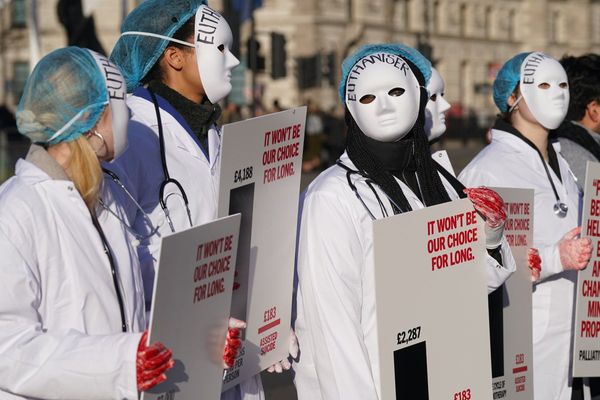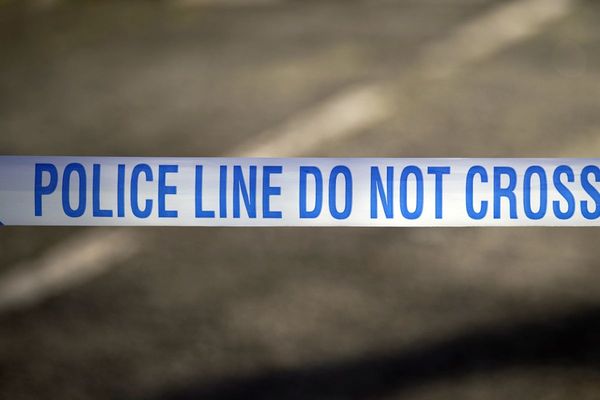
Donald Trump was aware long before he took the stage at the “Save America” rally on 6 January that he would not march to the Capitol to protest the congressional certification of Joe Biden’s election win, according to his White House private schedule from that day.
The former president started his nearly 75-minute long speech at the Ellipse by saying he would go with the crowd to the Capitol, and then repeated that promise when he said he would walk with them down Pennsylvania Avenue towards the Capitol.
But Trump’s private schedule – released by the House select committee investigating the Capitol attack in a filing on Wednesday – shows Trump must have known that there were no plans for him to join such a march, and that he was being taken back to the White House.
The newly-released private schedule indicates Trump deliberately lied to his supporters, raising the spectre that he made a promise he had no intention of honoring so that they would descend on the Capitol and disrupt Congress from certifying Biden as president.

It is a significant revelation that could bolster the select committee’s claim in the filing that Trump engaged in a criminal conspiracy to defraud the United States by seeking to obstruct a lawful function of the government by deceitful or dishonest means.
“Trump telling the crowd that he would join them at the Capitol was incendiary in that they thought that their field marshal would be there,” said Ryan Goodman, a former special counsel at the Department of Defense. “It is further evidence that Trump knew he was inciting an already highly volatile situation.”
The former president’s private schedule may also support a parallel civil suit brought by the Democratic congressman Eric Swalwell, a former House impeachment manager, that Trump prompted the Capitol attack through his comments in his speech.
“Trump directly incited the violence at the Capitol that followed and then watched approvingly as the building was overrun,” the lawsuit said. “The horrific events of January 6 were a direct and foreseeable consequence of the Defendants’ unlawful actions.”
Trump’s private schedule for that day indicated the former president was to travel directly from the White House to the Ellipse, speak at the “Save America” rally there, and then immediately return to the White House once his speech had concluded.
The former president was running late on 6 January, but the timestamp on the document reads 11.22am – roughly half an hour before he started to speak at the rally at 11.50am – meaning he must have known before he took to the stage that he was not going to the Capitol.
Trump’s promises are significant as they served as one of the primary motivations for his supporters to march to the Capitol alongside militia groups like the Oath Keepers, and were used by far-right activists like Alex Jones to encourage the crowd along the route.
Indeed, testimony in federal prosecutions of rioters charged in connection to the Capitol attack suggest Trump’s promises that he would walk with them to the Capitol was the proximate cause for them to also walk up to Congress before the march descended into a riot.
An analysis of cellphone data published by the New York Times also reveals that many of Trump’s supporters who marched from the rally to the Capitol went down Pennsylvania Avenue as he had suggested, a more circuitous route than walking up the National Mall.
Crucially, Trump made the false promises that led the crowd to go to the Capitol in spite of being told by the Secret Service days before the situation was too volatile for them to guarantee his security if he joined them, according to a source familiar with the matter.
That raises the prospect that the former president encouraged his supporters to march on the Capitol, on a premise he knew to be false, in the hope that the security situation he had been told was volatile would lead to some event that would stop Biden’s certification.
But regardless of what he agreed with the Secret Service, his private schedule from just before the speech indicates Trump deliberately and repeatedly lied to the crowd about his intentions in a way that could leave him vulnerable to criminal or civil charges.
The former president’s private schedule came as part of court filings submitted by the select committee seeking to challenge former Trump lawyer John Eastman’s claim that thousands of emails demanded by the panel are protected by attorney-client privilege.
The select committee said in its filing that it believed the privilege asserted over the records were not applicable because of the so-called crime-fraud exception, arguing Eastman was involved in potentially illegal efforts by Trump to overturn the 2020 election.







